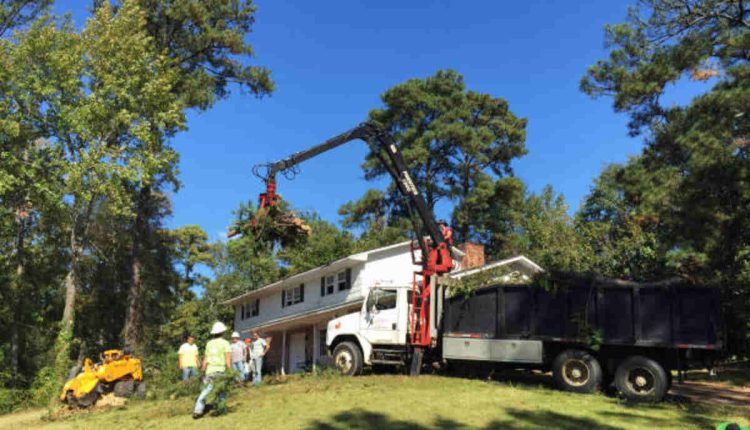Evergreen trees are plants with needle or scale-like leaves that persist year-round. Examples of such trees are pines, spruces, and firs as well as some broad-leaved species such as juniper, yew arborvitae, and false cypress. Pruning of evergreens should primarily be performed for corrective reasons rather than cosmetic ones; avoid pruning evergreens in late summer/early fall as new growth may not harden before winter hits. Have the Best information about los gatos tree trimming.
Tree Identification
Evergreen trees remain green throughout the year and do not drop their leaves when autumn arrives, unlike their deciduous counterparts. Most conifers as well as some broad-leafed evergreens such as pines, hemlocks, firs, spruces, cedars, and yews qualify as evergreens.
Evergreens require minimal pruning if properly planted. Corrective pruning primarily entails deadwood removal to avoid disease issues and to create space for new growth to form before winter sets in. When pruning diseased wood, make thin cuts well below any affected area before disinfecting tools with Lysol, Listerine, or rubbing alcohol between each cut. Shearing or hedging evergreens is best avoided as this may permanently alter their shape or stimulate new growth that won’t harden before then winter comes.
Evergreens can be divided into several distinct groups according to the way their branches are arranged, with pines, spruces, and firs being whorl-branched conifers, while yew, arborvitae, and false cypress being examples of random-branched evergreens. Whorl-branched conifers feature preformed shoots that grow out each year into new whorls; random-branched evergreens have buds appearing randomly throughout a shoot with distinctive characteristics for identification allowing identification; identification may also require leaf scars, thorns thorns thorns pores or scents – for which a 5-10x hand lens will prove invaluable in inspecting branches bud for these features.
Tree Pruning
Maintaining healthy trees, shrubs, and roses by regular pruning can greatly benefit their health, limit growth, and enhance landscape beauty. Pruning can also reduce risks from storm damage as well as prevent disease transmission.
Pruning involves selectively cutting away plant parts such as branches, buds, and roots to enhance a plant’s shape, structure, and health. Pruning may also promote flowering or fruit production. Consulting an arborist for assistance will keep your trees and shrubs looking their best while remaining healthy and maintaining optimal aesthetics.
Pruning can serve a variety of goals; the three most widely utilized tree-trimming methods are thinning, heading, and rejuvenation.
Thinning involves selectively pruning specific live branches to decrease overall tree density, opening the crown for sunlight penetration, and relieving stress from gravity, wind, ice, and snow on specific limbs. Thinning can either be performed against an exact target or a targeted percentage reduction over three years (not exceeding one-third of total canopy cover).
Heading cuts involve trimming off lateral branches emanating from a main branch at an individual point on the stem. This technique is commonly used to control size and shape as well as eliminate suckers. When done properly, this approach can be very successful but care must be taken not to over-prune.
Rejuvenation pruning involves selectively pruning back old, overly large, or damaged branches to spur new wood formation in a wide variety of trees. Rejuvenation pruning is especially common on broadleaved evergreens such as Rhododendrons, Mountain Laurels, and Hollies as well as evergreen conifers such as Spruces, Firs, and Pines as well as needled evergreens such as Hemlocks or Yews.
Pruning can be most successful when conducted during the dormant season – usually late winter through March or April for most species – as this allows branches to heal more quickly from wounding while being less prone to infections caused by pathogens like oak wilt or Dutch elm disease.
Tree Removal
Tree trimming services require specific credentials, equipment, and insurance to protect workers – something most landscapers won’t provide – making hiring a professional tree service worthwhile. Also note that certain varieties of trees require pruning at different frequencies than evergreens for instance – fruit-bearing ones will need regular trimming while evergreens might only need trimming every so often.
Holly Expert Tree Service has been serving New York City residents since 1981. Their team provides maintenance work such as trimming and pruning to keep branches away from power lines or neighboring properties, as well as removal of dying or pest-infested trees that encroach too closely onto sidewalks, water lines, or property foundations.
This licensed tree service provides stump grinding, cabling, and bracing services, pruning services, lightning protection system installation, and consulting as well as land clearing consulting. They also supply seasoned firewood logs as well as hardscaping projects. Their tree care specialists consult with ISA-certified arborists on the most effective ways to maintain trees on residential and commercial properties.
Tree Maintenance
Tree maintenance is an integral component of caring for any property, and hiring an arborist is the answer to ensuring healthy trees. A certified arborist will assist with pruning, trimming, and other services that keep trees looking their best, as well as offering advice about proper tree planting plans that encourage optimal growth for newly planted or young trees. Furthermore, an arborist can provide fertilizer tailored specifically to your environment and soil requirements to reduce watering requirements while controlling stormwater runoff; additionally, they can aid with protecting against damage caused by animals or insects that threaten trees; additionally, preventative measures against pollution from freeways are provided by arborists as well.
